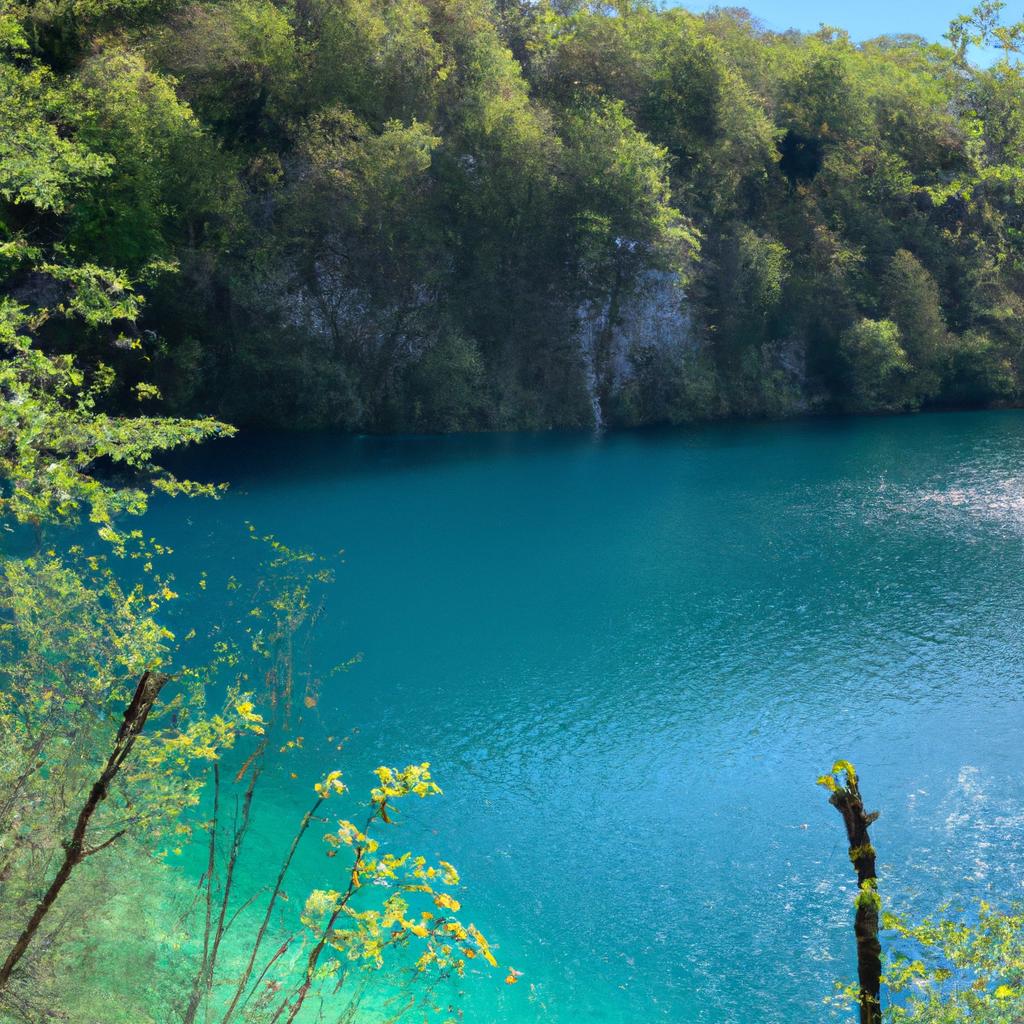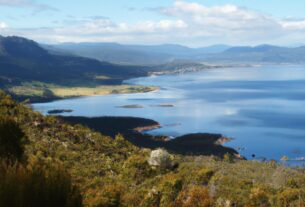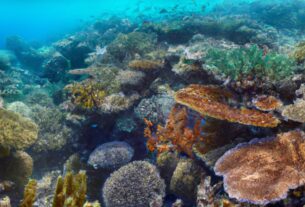Imagine glistening water flowing from deep within the earth, creating magnificent waterfalls and tranquil pools. This breathtaking spectacle is known as a karst spring. Karst springs are formed when soluble rocks like limestone, dolomite, and gypsum dissolve, allowing water to flow through underground channels and emerge as a spring. These springs not only showcase nature’s beauty but also play a vital role in providing clean water to our planet.
In Croatia, karst springs are abundant and hold immense significance for the country’s natural heritage. Tucked away in the Balkans, Croatia is a land of diverse landscapes and stunning natural wonders. With over 700 karst springs, it stands as one of the most karst-rich regions globally. From the enchanting Plitvice Lakes National Park to the mesmerizing Krka National Park, Croatia’s karst springs offer visitors a unique and unforgettable experience.
Unveiling the Wonders of Karst Springs in Croatia
Croatia’s karst springs are renowned for their unique geological features and crystal-clear waters. Let’s dive into some of their remarkable characteristics:
Geographical Location
Croatia’s karst springs are mainly found in the Dinaric Alps range and along the Adriatic Sea coast. The Dinaric Alps region boasts awe-inspiring karst formations, including the internationally recognized Plitvice Lakes and Krka National Parks. These parks have been granted UNESCO World Heritage status due to their exceptional geological and biological significance.
Water Flow and Temperature
The karst springs in Croatia are known for their high water flow and constant temperature. The volume of water depends on various hydrogeological factors, such as the depth of underground aquifers and the permeability of rocks. These springs maintain a relatively stable temperature throughout the year, ranging from 10 to 15 degrees Celsius.
Flora and Fauna
Croatia’s karst springs support a diverse range of flora and fauna species. The pristine waters provide an ideal habitat for various fish species, including trout and grayling. The surrounding forests and meadows are home to an array of plant and animal species, including bears, wolves, and lynx. These characteristics make Croatia’s karst springs not only a unique natural wonder but also a vital ecosystem that supports biodiversity and provides clean water for the region.
Top 3 Karst Springs in Croatia
While Croatia is blessed with numerous karst springs, some locations stand out for their unparalleled beauty and charm. Here are three must-visit karst springs in Croatia:
Plitvice Lakes National Park
Plitvice Lakes National Park is one of the oldest and most renowned national parks in Croatia. It boasts 16 interconnected lakes, numerous waterfalls, and crystal-clear streams. The lakes display shades of turquoise and emerald green, creating a mesmerizing sight that leaves visitors in awe. The park’s karst springs serve as the lifeblood of the Plitvice Lakes system, making it a vital location for preserving karst hydrology.
Krka National Park
Krka National Park is another gem that shouldn’t be missed. The park’s centerpiece is the Krka River, which hosts a series of seven captivating waterfalls. The Skradinski Buk waterfall, towering at an impressive 45 meters, is the most famous among them. Karst springs in the park supply water to the Krka River, creating a perfect habitat for various fish and bird species.
Una National Park
While Una National Park is primarily situated in the northwestern part of Bosnia and Herzegovina, it extends into Croatia as well. The park takes its name from the stunning Una River, renowned for its crystal-clear water and breathtaking waterfalls. Karst springs within the park serve as the primary water sources for the Una River, making it a vital location for the preservation of karst hydrology.
These three locations provide just a glimpse of the numerous karst springs waiting to be explored in Croatia. Each offers a unique experience, from serene walks to thrilling adventures. So, pack your bags and embark on a journey to uncover the captivating beauty of Croatia’s karst springs!
Activities to Indulge in at Karst Springs in Croatia
When it comes to experiencing the allure of karst springs in Croatia, there are activities for every preference. From leisurely strolls to adrenaline-pumping pursuits, here are some popular options to make the most of your visit:
Hiking and Nature Walks
Croatia’s karst springs are surrounded by stunning natural landscapes, making them ideal for hiking and nature walks. Plitvice Lakes National Park, for instance, offers a network of well-marked trails that wind through lush forests and around tranquil lakes. Krka National Park is another hiker’s paradise, featuring trails that showcase the park’s extraordinary waterfalls and river canyons.
Swimming and Diving
Swimming in the crystal-clear waters of Croatia’s karst springs is an absolute delight, offering respite from the summer heat. Popular swimming spots include Skradinski Buk waterfall in Krka National Park and Veliki Slap waterfall in Plitvice Lakes. For those seeking an extra thrill, diving is an enticing option. Cave diving at the Blue Grotto on the island of Biševo promises an unforgettable experience.
Boat Tours and Kayaking
For a fresh perspective, boat tours and kayaking are fantastic ways to explore the karst springs. Krka National Park, for example, offers boat tours along its picturesque river, allowing visitors to immerse themselves in the park’s enchanting waterfalls and canyons. Kayaking is also a popular choice, with many rental companies providing kayaks for self-guided exploration of the karst springs.
Whether you prefer a leisurely stroll or an adrenaline-fueled adventure, Croatia’s karst springs offer a range of activities to suit all tastes. So, pack your bag, put on your hiking boots, and get ready to immerse yourself in the beauty of these natural wonders!
Conservation Efforts for Karst Springs in Croatia
Preserving the natural beauty of karst springs in Croatia is vital for their ecological and cultural significance. National parks and conservation organizations in the country play a crucial role in safeguarding these unique natural wonders.
The Importance of Preserving Karst Springs
Karst springs not only provide clean water but also support biodiversity. The distinctive geological formations and aquatic habitats created by these springs are home to a diverse range of flora and fauna. Preserving these natural habitats is essential for maintaining the delicate balance of the ecosystem. Furthermore, karst springs hold cultural significance for local communities and have shaped Croatia’s cultural heritage for centuries.
Role of National Parks and Conservation Organizations
Croatia’s national parks, such as Plitvice Lakes and Krka, are entrusted with protecting and managing the country’s natural resources, including karst springs. These parks have implemented various measures to preserve the ecological and cultural importance of karst springs. These measures include regulating visitor access and monitoring water quality to ensure the sustainability of these fragile ecosystems.
Conservation organizations, such as WWF Adria, are also actively involved in protecting karst springs in Croatia. By launching projects to monitor and safeguard endangered species in these springs, such as the European otter, they contribute to the preservation of these fragile habitats.
Embracing Sustainable Tourism Practices
Tourism plays a significant role in Croatia’s economy, but it also has a significant impact on the environment. To ensure the sustainability of tourism, national parks and conservation organizations have embraced sustainable practices. These practices involve limiting visitor numbers, promoting eco-friendly activities, and educating visitors about the importance of preserving natural habitats.
In conclusion, conserving karst springs in Croatia is vital for their ecological and cultural significance. National parks, conservation organizations, and sustainable tourism practices all contribute to the preservation of these natural wonders for future generations to cherish.
In Conclusion
Croatia’s karst springs are a natural wonder that deserves a place on every nature lover’s bucket list. From the captivating Plitvice Lakes National Park to the mesmerizing Krka National Park, Croatia offers a kaleidoscope of landscapes and experiences. The crystal-clear waters, enchanting waterfalls, and serene pools are bound to leave you spellbound.
Preserving these natural wonders for future generations is a shared responsibility. At TooLacks, we are committed to promoting and advocating for the preservation of our planet’s natural marvels. We hope this article has inspired you to visit Croatia’s karst springs, appreciate their beauty, and support conservation efforts.
So, what are you waiting for? Pack your bags and embark on a journey to discover the magic of karst springs in Croatia. Trust us; it will be an adventure you won’t regret!



